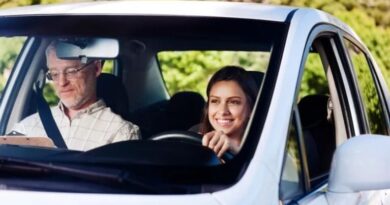If you have recently been involved in a car accident and believe the other driver was at fault, you may be wondering what your next steps are. The most important thing after an accident is to make sure everyone involved is okay. If a person is seriously injured or there is additional danger, call the emergency number.
Once everyone is safe, you need to determine who was at fault for the accident.
Determining fault in a traffic accident
Even if you are almost certain that you were not at fault, there are some questions you should clarify before seeking compensation.
Was your vehicle rear-ended?
If someone has hit your vehicle, the situation can be fairly straightforward. The driver who hit your vehicle may be considered at fault. However, depending on the circumstances, this is not always the case.
Did someone run a red light?
If your accident was caused by the other driver running a red light, you will most likely be found at fault.
In addition, you should take notes about the accident and take photos of the damage caused. It is also a good idea to get witness data in case you need it in the future. There are insurance companies where you can do this directly through their app. You just have to make sure to add your policy to the app beforehand. This data can help the insurer a lot when it comes to claiming.
Have you pleaded guilty?
After a car accident, it is normal to be in a state of shock. However, it is important not to admit fault at the scene of the accident. You may not be in the right frame of mind, or you may not be qualified to decide this. Instead, try to remain calm and focus on getting detailed information from the other driver.
Do I have to pay accident compensation if I am not at fault?
If the other driver was entirely at fault and you are insured, you will not have to pay the excess if you can prove it:
- the other driver’s name
- your address and
- the registration number of the vehicle they were driving at the time of the accident.
If you cannot provide this information when notifying the claim, you will have to pay the corresponding excess.
What if the other driver was not insured?
If you find yourself in a situation where the at-fault driver was not insured, you should contact your insurer as soon as possible. If you are not prepared or are not sure you want to file a claim, they may enter a report into their system. It’s best to do this right away, when all the details are still fresh in your mind. And don’t worry that reporting an accident won’t affect your premium.
Does the level of my insurance affect the amount of my claim?
The amount of coverage you receive depends on the benefits to which you are entitled. Remember that liability insurance covers damage to the other party’s car or property, but not damage to your car if you are at fault. And if you only have CTP insurance, damage to your car is not covered. However, property damage liability insurance does cover uninsured motorists if they are at fault for the accident; see our “Damage caused by uninsured motorists” section for details, limits and conditions.
However, comprehensive insurance usually covers damage to your car regardless of who was at fault (unless they caused it deliberately). It is important to know exactly what is covered, especially when it comes time to make a claim. You can always find this information in the relevant product information statements.
You are also insured for a rental car following an accident that is not your fault. If you give us the name, address and license plate number of the person who caused the accident, we will arrange and pay the reasonable cost of a rental car that suits your transportation needs through our supplier.




